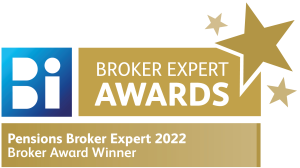Exchange-traded funds are growing in popularity so here are 10 things you need to know about them
With deposit rates continuing to slide, it’s no surprise that a survey last week found that more than three-quarters of savers are unhappy with their returns. Indeed the research from Standard Life showed that if you’re earning just 1 per cent on deposit, the jump in deposit interest retention tax (Dirt) to 41 per cent from the start of this year means you might end up with an after -tax return of little more than 0.5 per cent.
If this isn’t enough of a return for you, you might want to try to get your money working harder for you by considering other options. One alternative that continues to grow in popularity is exchange-traded funds (ETFs). They promise low-cost access to a wide variety of asset classes all over the world. According to data provider Morningstar, for example, ETFs accounted for about 5 per cent of European fund flows in 2013; in terms of total assets outstanding, it represents a similar proportion. But what might you need to know about ETFs before you invest? And, given the changes in last year’s budget, are they still suitable for Irish investors?
Accessible
For Eleanor Hope Bell, head of SPDR UK at State Street Global Advisors in London, a major advantage of ETFs is that they treat retail investors just like institutional ones. This means access to investments that might otherwise be closed off to a typical retail investor.
“You have very few vehicles out there where you have a retail investor and an institutional investor co-habiting in the same vehicle,” she says, adding, “that is very interesting. There is not a lot of product out there where the two have the same access point.”
Like stocks
In Europe, ETFs are typically structured as UCITS, which means that they carry all the protection associated with that structure for investors. But they are bought and sold like a stock, which means that determining the market price of an ETF is a little different to a typical mutual fund, where the net asset value (Nav) is key.
The Nav of an ETF is calculated by dividing the number of shares in issue by the total value of the assets of the fund. But, as an ETF is traded like a stock, investors may be more interested in the “market price” of the ETF, which is determined – just like a stock – by supply and demand. ETFs are typically structured to keep the differential between these two values tight, so that the market price reflects the performance of the underlying assets.
Start small
Unlike your typical mutual fund, in which you might need to make a minimum investment of several thousand euro, you can purchase as little as one ETF share, so can start investing, and get exposure to a broad basket of stocks, with a minimal investment. The fact that an ETF is traded on a stock exchange means that Irish investors have access to a wide range of ETFs through their broker. Globally, investors have about 1,500 ETFs to choose from.
Better balance
One of the great advantages of an ETF is the diversity the structure offers, with ETFs available which track the performance of nearly every market capitalisation, investment style and asset class – almost everywhere in the world.
Blackrock’s ishares range, for example, which accounts for 43 per cent of the ETF universe, offers investors 474 funds to choose from. Options include everything from an Asia Pacific Dividend ETF to an agribusiness ETF and a Turkish equities fund. Other major providers include Lyxor, which offers 250 ETFs and State Street, which has 55 ETFs in its SPDRS range.
They’re cheap
The average “total expense ratio” (Ter) or total costs associated with an ETF was just 0.636 per cent in 2013, according to Lipper. Compare this with your typical mutual fund which can cost you between 1-1.5 per cent in charges every year. And, whether you’re investing €100 or €100 million, your costs will be the same.
“The Ter per share would be the same whether you’re the largest investor or the smallest investor,” says Bell, although he notes that the brokerage fees to get in and out may differ.
Given that there is little that is certain when it comes to investing, opting for a low cost fund that gives you the asset spread you want – at a low cost – seems to make sense. Take an investment of €10,000, earning 5 per cent a year over five years. If you’re paying a fee of 0.5 per cent on this fund, your total return will be €12,447, based on total fees of €287 and an opportunity cost of €29, to account for the potential return lost to fees.
Increase this charge to 1 per cent, and your total costs will come to €626, including the opportunity costs, for a total return of €12,137. Push it up again to 1.5 per cent, and your return falls to just €11,834, due to costs of €929.
ETFs also compare well with many of the funds on sale by Irish fund managers, which Westlake describes as being “closet index trackers”. As an example, he examined the Irish Life Consensus Managed fund compared to the Vanguard FTSE All World ETF over a 12-year period, and found that the two funds were actually 96 per cent correlated with each other. However, the Vanguard fund has a Ter of 0.25 per cent while the Irish Life fund an annual management charge of 0.65 per cent. However, the Irish Life fund may be more efficient from a tax administration perspective.
Charges
When you buy a typical investment fund, you may have to pay an entry charge, but you may not, and many such funds don’t levy an initial allocation charge. With an ETF, however, you will always have to pay a charge to buy into and get out of such a fund, as they are bought and sold through a stockbroker.
For Irish investors, this may mean looking for a low-cost international broker or an Irish alternative. Davy’s Select service, for example, charges minimum transaction fee of €14.99 or 0.5 per cent of the trade and you will need just €500 to open an account. Another alternative is TD Waterhouse which charges €20 a trade.
ETF picks
Looking for an ETF to track the US market? Well be sure you pick the one that best suits your needs, as the options are many but each fund may track a different index and therefore you need to do your homework to make sure it’s investing in the stocks you think it is.
For example, the SPDRS S&P 500 tracks the eponymous index, which accounts for about 80 per cent of the US market. Another alternative is the MSCI USA ETF from ishares. This tracks the performance of the MSCI index which has a broader reach than the S&P 500, with about 610 constituents accounting for about 85 per cent of the US market. As the former is more concentrated than the latter, your holding of Apple for example, will be slightly greater in the ETF that tracks the S&P 500.
Tax matters
If an investor puts money into an Irish mutual fund, they can watch that investment grow (hopefully), tax free, for seven years, under the “gross roll-up regime”. At this point, taxes are then charged on any gains the fund has made at an exit tax rate of Dirt of 41 per cent. According to the Revenue Commissioners, ETFs enjoy a similar tax treatment – depending on where they are domiciled.
If a fund is domiciled in Ireland (as much of the ETF range from iShares is, for example), the EU, the European Economic Area (which includes Iceland, Liechtenstein and Norway) or an OECD treaty partner it will be taxed under the aforementioned gross roll-up regime. But if the fund is domiciled outside this area, income payments from the ETF are subject to income tax at the marginal rate and disposals are subject to capital gains tax.
Budget changes
Liable as they are to a tax rate of 41 per cent, Westlake argues that products such as ETFs – “or any other investment strategy that is caught by gross roll up for that matter” – may no longer be appropriate for certain groups of Irish investors, including those with low taxable incomes and foreign nationals living in Ireland.
So much so, that Westlake now abides by the following idiom “Don’t let the tax tail wag the investment dog – unless you live in Ireland”.
After all, if you pay income tax at a marginal rate of 20 per cent, why do you want to pay tax on your investments at 41 per cent? As a result, he has been working with clients on finding suitable investments that are liable to income (which could be as low as 27 per cent when universal social charge is factored in) or capital gains tax (33 per cent) rather than Dirt or exit tax (41 per cent). These tax issues makes Westlake “extremely selective about what we buy and how we buy it” when it comes to products such as ETFs.
Risk
Like all market-based investments, ETFs can be risky and there is no guarantee that you will not lose money if the particular fund you choose to invest in slides. And, apart from the risk involved in investing the underlying asset of the ETF, other risks may also apply.
These include counterparty risk, because an ETF does not always hold the physical assets that it tracks. In that regard, it is closer to a derivative than an equity investment. It is always worth while for an investor to check if the ETF owns the underlying assets.
“You would expect the (ETF) manager to buy the individual securities comprising the Iseq or FTSE All-Share index for example. But some ETFs don’t do that and they enter into a swap contract with an investment bank to replicate the index. So risks around counterparties can be an issue,” advises Westlake.
According to Hope Bell, the SPDRs range of funds physically hold the assets in which they are invested, and if this strategy were to change, the fund manager would “give ample notice to investors”.
Another risk associated with investing in passive strategies is that the fund manager is unable to make a defensive move. If a stock in an equity ETF starts to crash, for example, the ETF may lose a lot of its value, and the manager won’t be able to do anything to prevent this. The only way to stop investing in the stock is if it is moved out of the index. Also, while an ETF may be denominated in a particular currency, underlying investments may be held in other currencies. As a result, the investment could be subject to currency risk.



